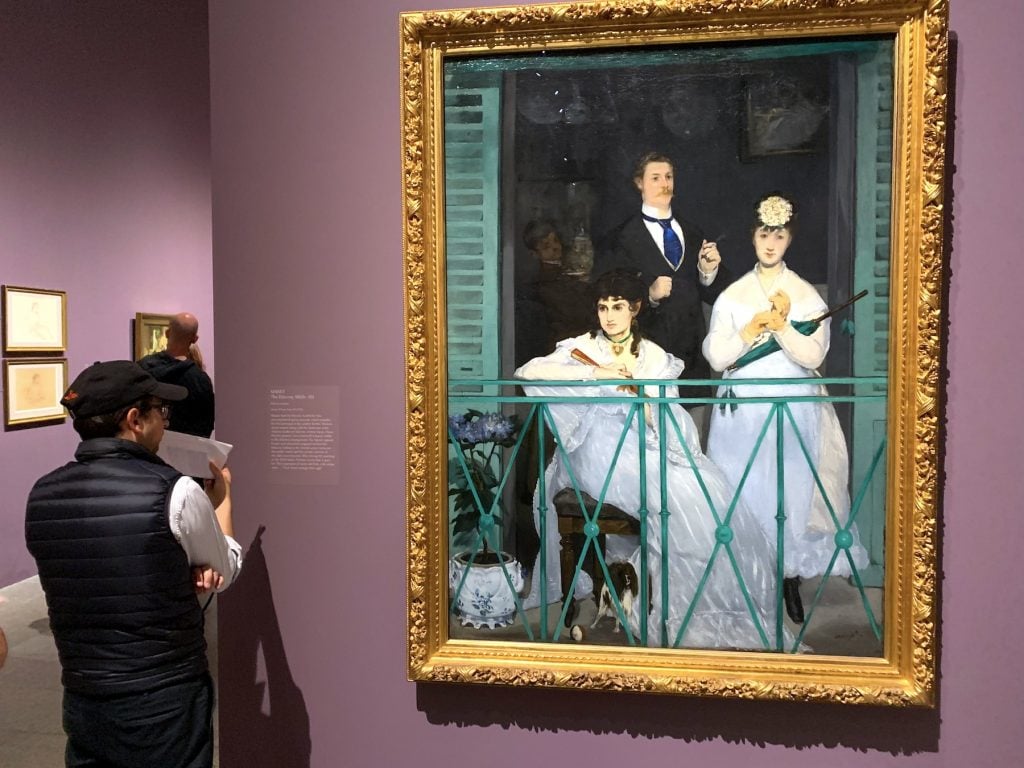Art History
Art We Love: The Everlasting Enigma of Manet’s Balcony Scene
On Édouard Manet’s 'The Balcony' (1868-69)

On Édouard Manet’s 'The Balcony' (1868-69)

Eileen Kinsella

For an episode of the Art Angle podcast, we asked Artnet News writers and editors to tell us about one work of art that brings them joy. The following is a part of a series of transcripts of the answers. You can listen to the entire podcast on Apple Music, Spotify, or here.
For a work of art that brought me joy this year, I chose Édouard Manet’s painting The Balcony (1868-69).
This was a piece that I had never seen before, and as I was walking through the “Manet/Degas” show at the Metropolitan Museum of Art, it stopped me in my tracks. I was immediately curious about the story behind it.
The painting features three figures sitting on a balcony with beautiful green shuttered doors on each side—one woman is seated and looking over at the viewer; another woman is standing just to her left; and a gentleman is situated behind them. I immediately thought I was wrong for finding it to be such a curious composition, and that there must be some backstory that I simply wasn’t familiar with.
Although I assumed the figures were watching a parade or something happening in the street from their balcony perch, the work was described as “three friends of Manet,” including the painter Berthe Morisot, a landscape artist named Antoine Guillamet, and a violinist named Fanny Claus. Upon reading the description, I also realized that there is a fourth shadowy figure painted in the open doorway behind the primary trio, looking over his shoulder. This man is apparently Manet’s nephew, but his inclusion left me with more questions.
I felt validated in my curiosity where the description continued: “The figures appear frozen and detached, trapped behind the balcony railing in the liminal space between the public street and the private interior of the dark room beyond.” I found it so funny that there was no indication that the subjects were even watching something in the street below, instead just seemingly sitting there and posing.
There is something about the interior space for me—the dark inside and the light outside, and the very formal quality of these figures and what their relation is to each other. There was a line at the end of the wall text describing how, when Berthe Morisot saw The Balcony at the 1869 Paris Salon, she wrote that it gave her “the impression of some wild fruit, a bit unripe even,” adding “I look more strange than ugly.” I don’t know why exactly this painting gives me so much joy, but there is something very compelling about the colors, the contrast in lighting—the whole strange set-up of a frozen moment in time.